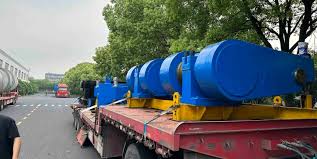In cement plants and heavy industries, the vertical roller mill (VRM) is one of the most critical machines for grinding raw materials, clinker, and coal. Known for its efficiency and high output, the VRM can dramatically reduce energy costs compared to traditional mills. However, like any large piece of equipment, it is not immune to operational issues. One of the most common and disruptive problems is vertical roller mill vibration.
Excessive vibration can damage wear parts, cause production losses, and increase downtime. The good news is that with the right knowledge, you can diagnose and fix VRM vibration effectively. In this guide, we’ll walk you through a 5-step approach to reducing vertical roller mill vibration, ensuring smoother operation and longer equipment life.
Brands like Cementl, a trusted name in supplying wear parts and solutions for coal vertical roller mills and cement VRMs, offer products that not only improve grinding efficiency but also minimize the risk of vibration-related failures.
Why Does Vibration Occur in a Vertical Roller Mill?
Before solving the problem, it’s important to understand why vibration occurs. Common causes include:
- Uneven material feed – Poor feeding consistency leads to roller pressure fluctuations.
- Worn rollers and liners – Excessive wear causes imbalance and irregular grinding.
- Incorrect grinding pressure – Too high or too low pressure destabilizes material bed formation.
- Poor airflow or separator issues – Inconsistent airflow impacts material classification.
- Foreign material – Unexpected objects in the feed can disrupt grinding.
Ignoring these warning signs can lead to breakdowns, unplanned shutdowns, and costly maintenance.
5-Step Guide to Fix Vertical Roller Mill Vibration
1. Check and Adjust Material Feed
Consistent feed flow is essential for stable grinding. Sudden surges or uneven material distribution can cause the rollers to exert irregular pressure, triggering vibration. Use controlled feeders and ensure raw materials are properly blended before entering the mill.
Pro Tip: Cement plants often use weigh feeders to maintain stable feed rates, reducing fluctuations in the grinding bed.
2. Inspect Rollers and Liners for Wear
Worn-out rollers and liners are one of the leading causes of vibration. Over time, the grinding surface loses its shape, leading to poor material grinding and instability.
Replacing them with Cementl vertical roller mill wear parts ensures durability and precision fit. Cementl’s rollers and liners, built with high-chromium alloys, can withstand extreme conditions, helping minimize vibration and extend maintenance cycles.
3. Optimize Grinding Pressure
Grinding pressure directly affects material bed stability. Too much pressure crushes material unevenly, while too little causes slipping, both resulting in vibration.
Operators should continuously monitor pressure levels and adjust based on feed composition. Modern VRMs come equipped with control systems that automate this process, but regular checks are still crucial.
4. Maintain Airflow and Classifier Efficiency
Airflow plays a critical role in separating fine particles from coarse ones. Poor airflow balance or malfunctioning classifiers can create turbulence inside the mill, increasing vibration.
Upgrading to advanced classifier systems, like those provided by Cementl, can improve separation efficiency, reduce recirculation of coarse material, and stabilize mill performance.
5. Monitor for Foreign Material and Conduct Regular Inspections
Foreign objects such as metal pieces or oversized raw material can cause sudden spikes in vibration. Regular inspections and using magnetic separators in the feed system help prevent this issue.
Routine condition monitoring with vibration sensors also allows operators to detect early warning signs and take corrective action before major failures occur.
Benefits of Reducing VRM Vibration
When you address vibration issues proactively, you’ll experience:
- Reduced Downtime – Stable operation means fewer shutdowns.
- Lower Maintenance Costs – Less wear and tear on rollers and liners.
- Energy Savings – Efficient grinding consumes less power.
- Improved Cement Quality – Consistent grinding ensures uniform particle size.
- Extended Equipment Life – Major components last longer under stable conditions.
Cementl: A Trusted Partner in Reducing VRM Vibration
For cement producers and industries using coal vertical roller mills, Cementl offers a range of wear parts and classifier technologies designed to minimize vibration and maximize performance. Their solutions include:
- High-durability rollers and liners engineered for long service life.
- Custom-designed classifiers to improve airflow and reduce turbulence.
- Technical support to help diagnose and fix vibration issues quickly.
By combining Cementl’s wear parts with proactive maintenance strategies, operators can achieve smoother mill operation, better efficiency, and reduced downtime.
Final Thoughts
Vibration in a vertical roller mill is more than just a nuisance—it’s a sign that something is wrong. Left unchecked, it can lead to costly breakdowns and lost productivity. By following this 5-step guide—checking feed consistency, inspecting wear parts, optimizing grinding pressure, maintaining airflow, and monitoring for foreign material—you can significantly reduce VRM vibration.
With high-quality solutions from Cementl, you not only fix the problem but also strengthen your mill’s long-term performance. Whether you’re running a cement grinding plant or operating coal vertical roller mills, the right approach and the right parts make all the difference in keeping downtime low and efficiency high.

